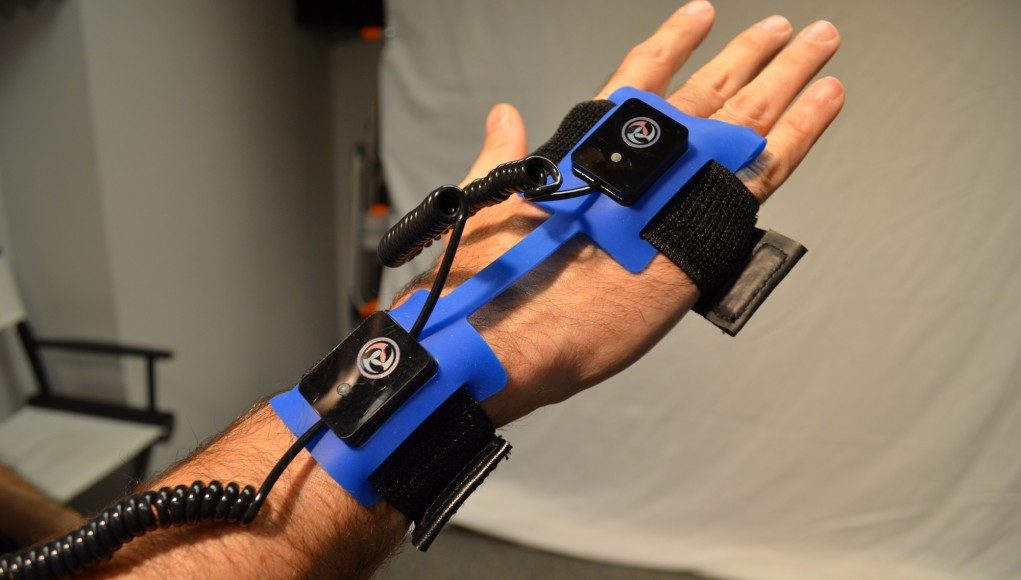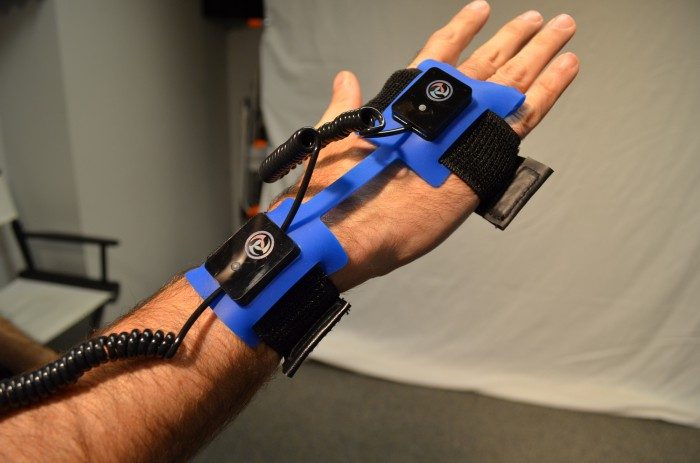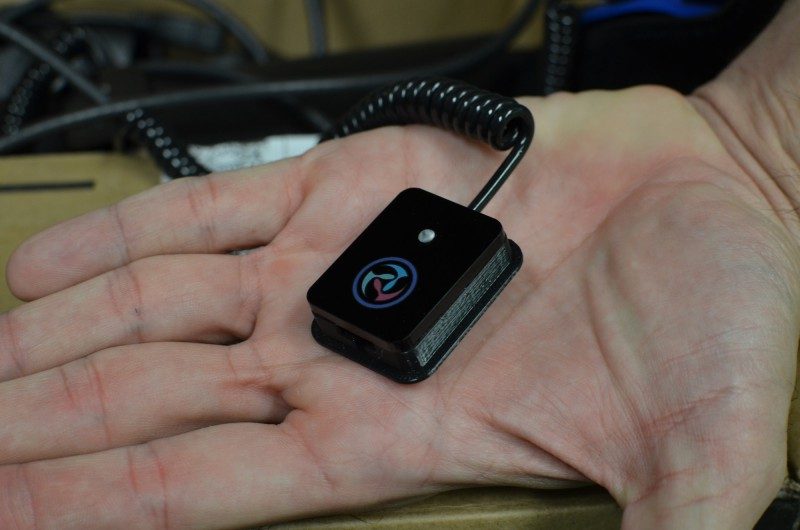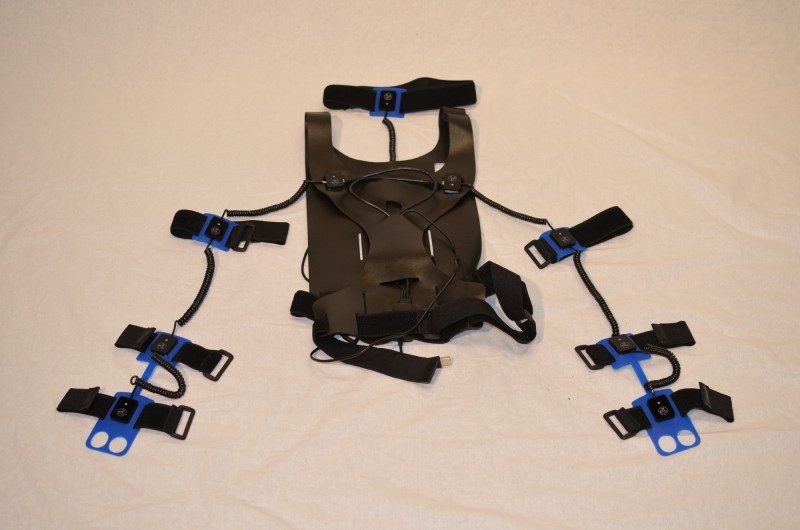Earlier this week I was fortunate enough to get my hands not only on YEI Technology’s existing 3-space tracking system, but I was also the first to see the true PrioVR virtual reality motion capture prototype.
Since the launch of the PrioVR Kickstarter, YEI Technology has demonstrated their vision for the VR tracking system using their existing 3-Space sensor suite. These general inertial sensors can be cobbled together for motion capture, but they aren’t made specifically for virtual reality motion capture. The forthcoming PrioVR sensors, which are smaller, cheaper, easier to equip, and higher performing, are built specifically for that purpose. I was fortunate enough to be the first one to see them in action.
Showing me the ropes of both the 3-Space sensor system and the first functional PrioVR prototype suit was YEI Technology’s Paul Yost, co-founder and head of R&D, and Dan Morrison, R&D developer. They brought with them a full 17 sensor 3-Space system, and an 11 sensor PrioVR prototype.
Better Performance
Yost told me that while the YEI team worked hard to bring the price of PrioVR down to consumer levels, they didn’t throw performance out the window. In fact, they improved it.
The 3-Space sensors were design for general motion sensing purposes, not necessarily to be cobbled together into a 17-sensor system. Because each sensor is broadcasting its own wireless signal, the bandwidth becomes saturated quickly, sometimes leading to lost packets and slower transmission than desired — not to mention the need for a small army of wireless dongles and charging cables.
With PrioVR, YEI made the smart choice to work from a single centralized wireless hub which offers a number of cost and performance enhancements. For one, the system needs only one wireless radio instead of 17. This brings costs down while also clearing the airwaves for a single signal (say that 10 times fast), leading to more accurate transmission with much lower chance of lost information. The hub works to reduce costs in the same way regarding the battery — it uses one larger battery instead of 17 smaller batteries. With these changes, you need only a single wireless receiver and one charging cable — much more sensible for home use.
Yost tells me that the change to a single wireless radio per suit means that you could operate one or two dozen PrioVR suits simultaneously before you start running into issues. Sounds like something the folks from VRCade might find appealing….
Newer technology in PrioVR brings big performance improvements over 3-Space. Bias instability, which Yost told me was “the measure of how good the gyroscope is at maintaining [its] position accurately over time and not drifting” is “an order of magnitude better” in the PrioVR sensors than in 3-Space — 1.5 degrees per hour vs. 11 degrees per hour. He also told me that the company has spent lots of R&D time on improving the algorithms used by each sensor to determine position and orientation.
As for sampling rates and latency, Yost says that 3-Space sensors run around 90Hz while PrioVR sensors are expect to get between 200 – 240Hz at 10ms or less, possibly down to 5ms. He compared it to the Kinect, which has a terribly sluggish 90ms of latency, or the Kinect 2 which is rumored to have 60ms of latency.
“We are at one sixth of the next Kinect, which hasn’t even been released yet,” said Yost.
The difference between 3-Space and PrioVR is not just about performance, but ergonomics too.
Easier Setup
The 3-Space sensors are stand-alone wireless units, each with their own battery and wireless radios, which are on an elastic velcro band. Putting on each of the 17 sensors takes some time — enough that I could definitely see it becoming a chore to do every time that you wanted to game.

PrioVR on the other hand is much closer to a VR motion tracking suit. Four of the chest and back sensors are mounted on a vest which takes just a few seconds to slip on. New glove-like guides, which YEI was showing for the first time, let you quickly slide on the hand and forearm sensors, which takes care of another four. From there two bicep trackers get strapped around with velcro, and last but not least, a strap for the head sensor slips on (the functional prototype they were showing didn’t include the leg sensors).
The whole ordeal is much faster and easier than putting on individual sensors as with the 3-Space system. Because PrioVR uses one central wireless hub, each sensor is attached by a flexible coiled cord, meaning that the upper body sensors are all held together in their basic shape — you’ll never need to sort through which one goes where, again reducing the time needed to start gaming in virtual reality.
And I shouldn’t forget size — the PrioVR sensors are much smaller than their older 3-Space brothers!










